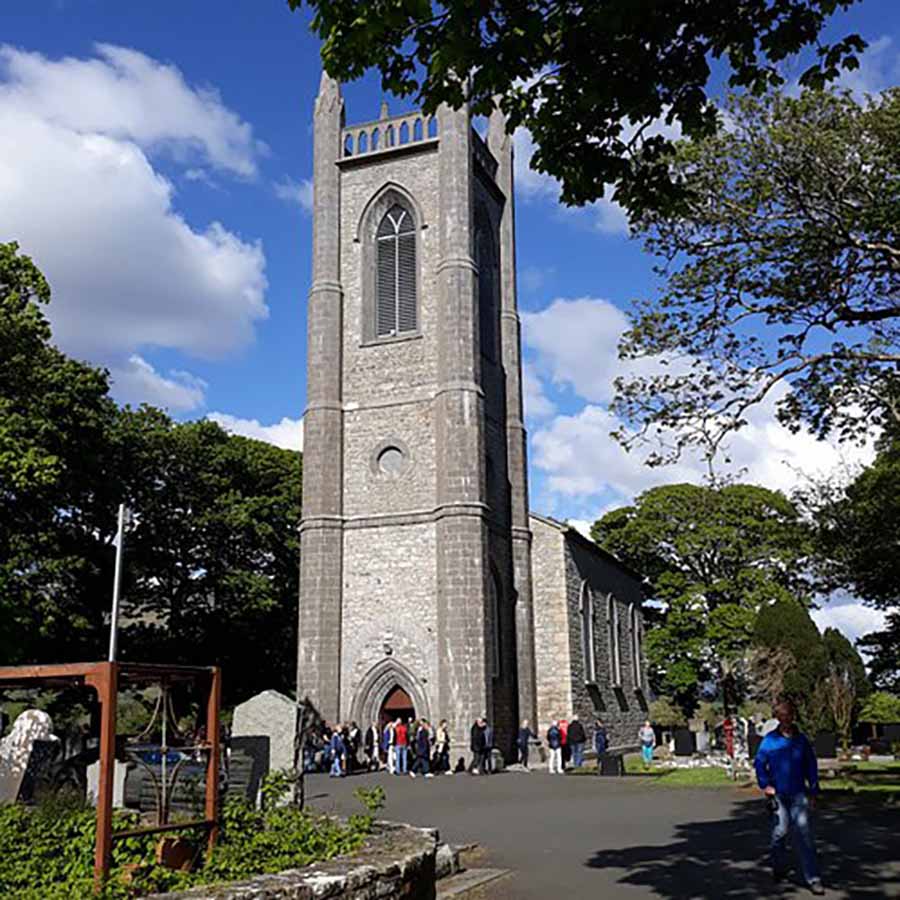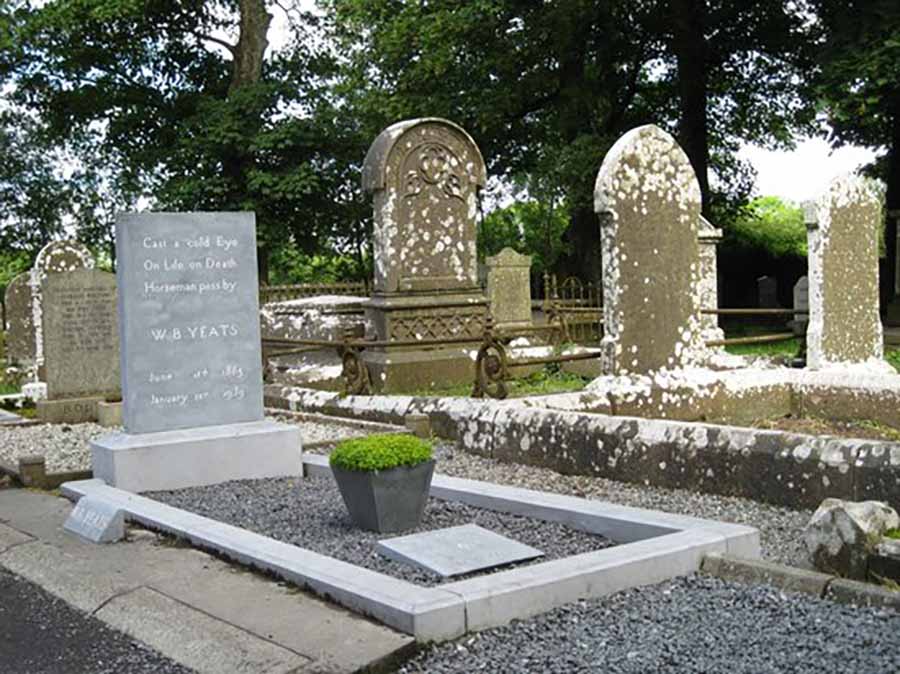
Drumcliffe, located in County Sligo, is a serene and historically significant village, best known as the final resting place of the Nobel Prize-winning poet W.B. Yeats and the site of Drumcliffe Church and its visitor centre.
Situated just 7 km north of Sligo town on the N15 road to Donegal, it’s easily accessible by car (10-minute drive from Sligo, 2.5 hours from Dublin) or bus (Bus Éireann route 480 or 483 to Drumcliffe Cross, a 2-minute walk).
The site, part of the Wild Atlantic Way and near the iconic Benbulben mountain, is open year-round, with the Drumcliffe Visitor Centre operating daily from 9:00 AM to 5:00 PM (extended to 6:00 PM in summer). Admission to the churchyard, Yeats’ grave, and historic monuments is free, while the visitor centre’s facilities (café, shop) are accessible without a ticket. The site appeals to literary enthusiasts, what Tourism Ireland marketing department calls the “culturally curious”, and those seeking a tranquil stop in Yeats Country.
- Yeats’ Grave and Drumcliffe Church: The centerpiece is the grave of W.B. Yeats (1865–1939), marked by a simple limestone headstone inscribed with lines from his poem Under Ben Bulben: “Cast a cold eye / On life, on death / Horseman, pass by!” Located in the churchyard of Saint Columba’s Church (Church of Ireland, built 1809), the grave draws literary pilgrims. The church, on a site founded by Saint Colmcille in 574 AD, is open to visitors and features a peaceful interior with stained-glass windows. Visitors note the “quiet and relaxing” atmosphere, though some find the grave understated compared to Yeats’ stature, fitting his wish for simplicity.
- Historic Monuments: Adjacent to the church are a 10th-century Celtic High Cross, intricately carved with biblical scenes, and the base of a 9th-century round tower across the road, remnants of an early Christian monastery. These monuments, free to explore, offer a glimpse into Ireland’s early medieval history. Informational plaques provide context, though some visitors wish for more detailed signage.
- Drumcliffe Visitor Centre: The small but welcoming centre, opposite the church, houses a café, gift shop, and information area. The café serves excellent coffee, homemade cakes, scones, and light meals (€5–10), praised for quality and friendly staff (e.g., “lovely service” from staff like Lisa). The gift shop offers Yeats’ poetry books, quirky cards, local woollen crafts, and souvenirs, with a focus on quality over quantity. Toilets cost €0.50 for non-café customers, with a complex payment system that can trigger alarms if bypassed, noted as a minor annoyance. The centre provides free parking and literature on Yeats, the church, and local history, making it a convenient base for groups.
- Yeats Connection and Literary Significance: Drumcliffe is steeped in Yeats’ legacy, as he spent childhood summers nearby and drew inspiration from the area’s landscapes, notably Benbulben. The centre offers insights into his life and work, with pamphlets and displays. Visitors can explore connections to poems like Under Ben Bulben or He Wishes for the Cloths of Heaven. The nearby Drumcliffe River and views of Benbulben enhance the poetic ambiance, ideal for a reflective stroll.
- Surroundings and Activities: The site’s proximity to Benbulben (10-minute drive to hiking trails) and Lissadell House (Yeats’ ancestral connection, 8 km away) makes it a hub for exploring Sligo’s Yeats Country. The flat, accessible churchyard suits all ages, though the round tower base requires crossing the N15, which lacks a pedestrian crossing. The area is ideal for photography, with Benbulben’s dramatic profile as a backdrop. Nearby attractions include Glencolmcille Folk Village, Strandhill Beach, or kayaking on Lough Gill (20-minute drive). A visit takes 30–60 minutes, longer with café stops or nearby hikes.
- Visitor Feedback: Drumcliffe holds a TripAdvisor Travelers’ Choice award for its “informative” and “peaceful” experience. Visitors praise the café’s desserts, free parking, and historical elements but note the small centre can feel crowded with coach tours. Some find the toilet fee inconvenient, and others wish for more extensive Yeats exhibits. The site’s simplicity and literary significance resonate, especially for those familiar with Yeats’ poetry.
- The centre occasionally hosts Yeats-related events, such as poetry readings or cultural talks, and 2025 may see new offerings tied to Sligo’s Yeats Summer School (July–August, www.yeatssociety.com). Expect possible pop-up literary events or guided walks, though none are confirmed. The centre’s social media (@DrumcliffeVisitorCentre) or www.drumcliffe.ie occasionally reveals updates.
- Improved Visitor Management: With growing tourism, the centre may introduce better crowd management for coach tours, addressing 2024 feedback about overcrowding. Minor updates, like improved signage for the round tower or enhanced café menus, are possible but unconfirmed. The focus remains on maintaining the site’s tranquil, authentic charm.
Drumcliffe’s compact size and free access make it an easy stop on a Sligo or Wild Atlantic Way itinerary. Combine with Benbulben hikes, Lissadell House, or Sligo’s Yeats Memorial Building for a literary-themed day. Bring weatherproof clothing, as rain is common, and pre-book guided tours for groups via www.drumcliffe.ie to avoid crowds. For 2025 updates, contact info@drumcliffe.ie




